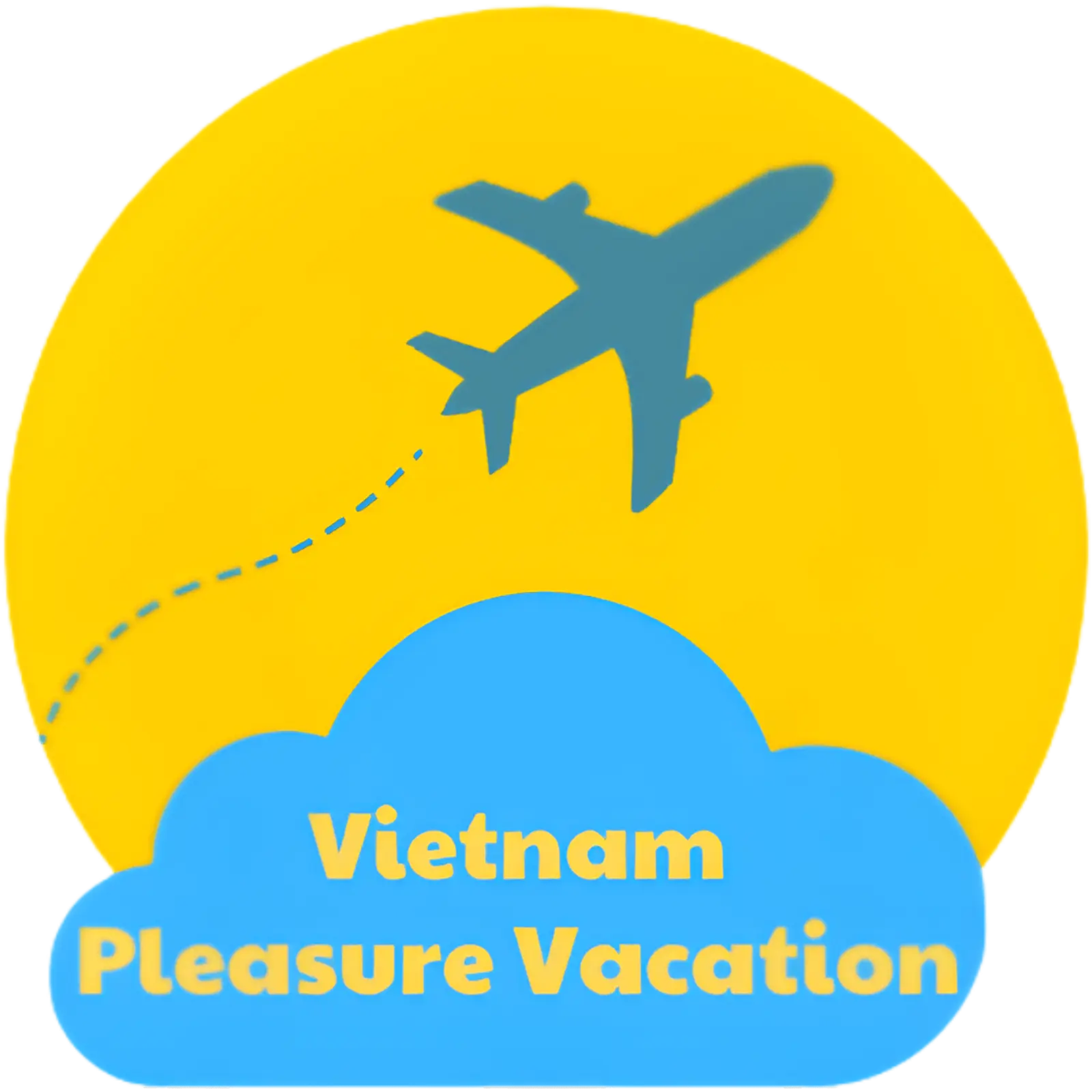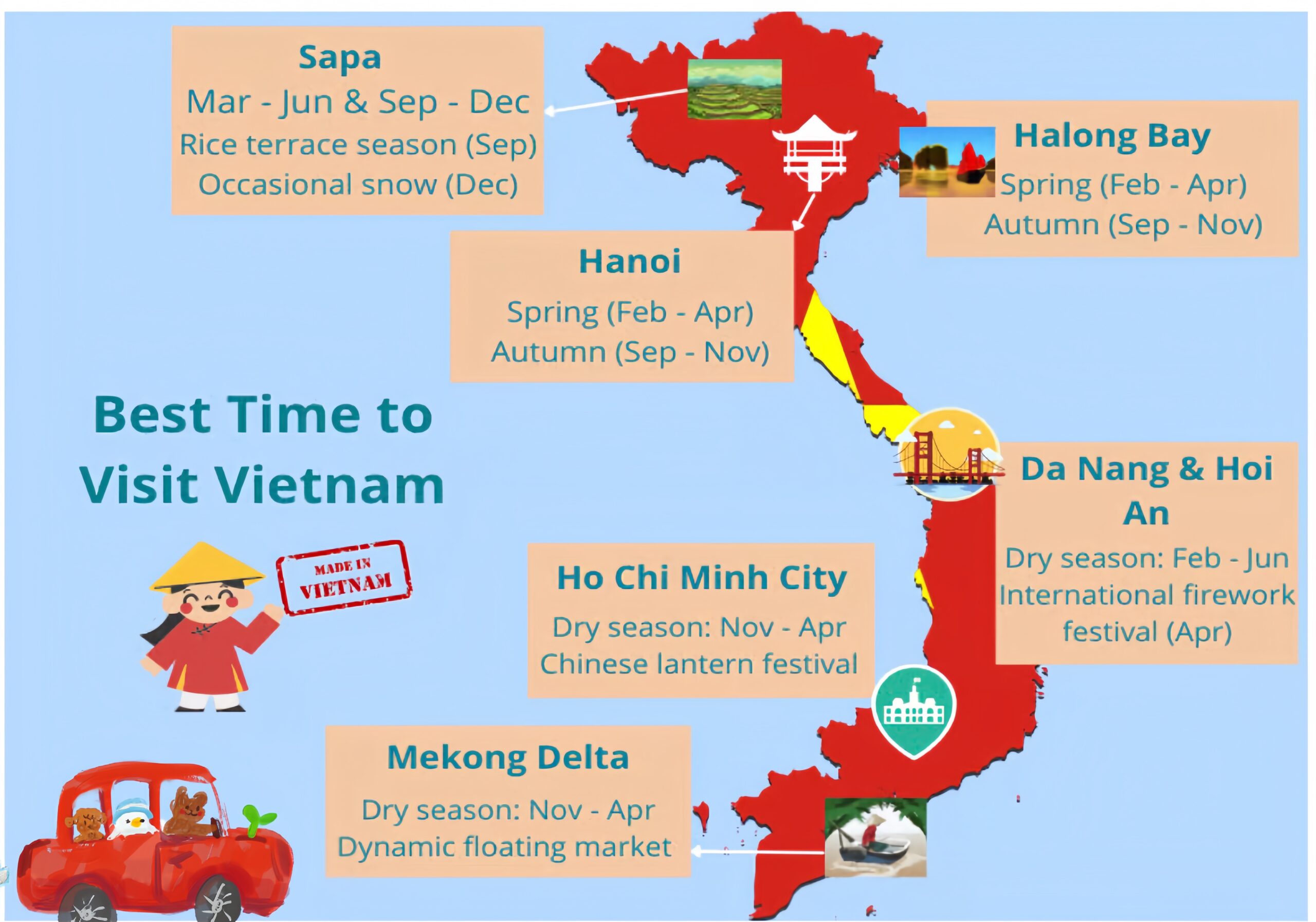Vietnam is a treasure of Southeast Asia, known for its breathtaking natural beauty, diverse culture, rich history, and kind people. Vietnam provides every visitor with a memorable experience with its distinctive fusion of historic customs and contemporary advancement.
However, the greatest time to travel depends on the particular regions you choose to explore because Vietnam is a long, thin country with a variety of climates across its regions. A thorough analysis of the ideal dates to visit Vietnam per region, taking into account travel experiences, festivals, and weather, can be found below:
1. Northern Vietnam (Ninh Binh, Sapa, Ha Long Bay, and Hanoi)
-Spring, summer, fall, and winter are the four distinct seasons of northern Vietnam.
Spring (March to April) is the ideal season.
Weather: Flowers in bloom, low humidity, and mild temps (15–25°C).
Highlights: Excellent for touring Hanoi’s Old Quarter, trekking in Sapa, and cruising in Ha Long Bay.
-Autumn (September to November) Weather: pleasant temps (18–25°C), clear skies, and a cool, dry day.
Highlights: Ha Long Bay is at its most picturesque, and Sapa’s rice terraces become golden, making it the perfect place for photography.
-Festivals:
Christmas & New Year (December). Although it is not an important & official holiday (Christmas) for Vietnamese, we do have lots of fun activities & beautiful decorations in all big cities to say goodbye the old year and welcome the New Year.
Vietnamese Tet (Vietnamese Lunar New Year) celebrations take place in the spring, usually in late January or early February.
Avoid:
- Summer (May to August):
- Hot and humid (up to 38°C), with heavy rainfall and occasional typhoons.
2. Central Vietnam (Hue, Da Nang, Hoi An, and Nha Trang)
The climate in Central Vietnam is tropical monsoon, with both dry and wet seasons.
The dry season (February to August) is the best time.
Weather: 25 to 35°C, sunny, and warm.
March to May: Perfect for touring the old village of Hoi An, the beaches of Da Nang, and the imperial citadel of Hue.
Beach enthusiasts in Da Nang and Nha Trang will love June through August.
-Festivals: Every month during a full moon, the Hoi An Lantern Festival takes place, with vibrant lanterns lighting the streets.
Avoid:
September through January is the rainy season, sporadic flooding and heavy rainfall, particularly in Hoi An and Hue.
Travel plans may be affected by the typhoon season, which runs from October to November.
3. Southern Vietnam (Ho Chi Minh City, Mekong Delta, Phu Quoc)
The two primary seasons of southern Vietnam’s tropical environment are wet and dry.
Best Time: November to April, during the dry season
Weather: bright and pleasant, with temperatures between 25 and 32 degrees Celsius.
Cooler months from November to February are ideal for visiting Ho Chi Minh City, taking in the Mekong Delta’s floating markets, and lounging on the beaches of Phu Quoc.
-March through April: Ideal for beach activities, it’s hotter but still dry.
-Festivals: In January and February, many people celebrate Tet, the Vietnamese Lunar New Year.
Avoid:
May through October is the rainy season, frequent, albeit brief, afternoon downpours.
The Mekong Delta frequently floods from August to October, when rainfall is at its highest.


Comment (0)